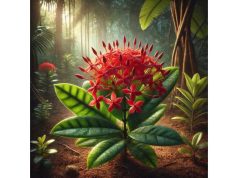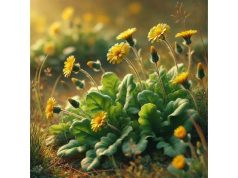
Indian Snakeroot is a time-honored herb celebrated in traditional Ayurvedic and indigenous healing systems for its potent therapeutic effects. Revered for its calming influence and cardiovascular support, this herb has been used to manage hypertension, stress, and various neurological conditions. Its bioactive alkaloids, such as reserpine and ajmaline, have drawn scientific interest for their diverse pharmacological properties. In this guide, we explore Indian Snakeroot’s botanical identity, intricate phytochemical profile, multifaceted health benefits, practical usage tips, and the latest research insights, providing a comprehensive resource for both enthusiasts and professionals.
Table of Contents
- Botanical Insights and Visual Recognition
- Phytochemical Spectrum and Key Bioactives
- Therapeutic Advantages and Core Health Qualities
- Practical Applications and Safety Considerations
- Scientific Evaluations and Critical Research
- Frequently Asked Questions
Botanical Insights and Visual Recognition
Indian Snakeroot, botanically known as Rauvolfia serpentina, is a perennial shrub that plays a significant role in traditional medicine across South Asia. Typically reaching heights of up to 2 meters, this woody shrub is characterized by its dark, glossy leaves, slender stems, and clusters of small, fragrant white or pale pink flowers. The plant’s distinctive elliptical leaves and deep, fibrous root system are easily recognizable, and its fruit, a follicle that releases minute, comma-shaped seeds, adds to its botanical uniqueness.
Taxonomy and Nomenclature
Belonging to the Apocynaceae family, Indian Snakeroot has earned a respected place in both classical Ayurvedic texts and modern pharmacopoeias. It is often referred to as sarpagandha in Sanskrit—a name that reflects its revered status in ancient healing traditions. The genus Rauvolfia comprises several species, yet R. serpentina stands out for its rich concentration of alkaloids and its potent medicinal properties.
Morphological Characteristics
The physical features of Indian Snakeroot are both elegant and functional:
- Leaves: The leaves are typically arranged in opposite pairs or in a spiral formation along the stem. They are dark green, glossy, and slightly leathery, an adaptation that helps conserve moisture in its native habitats.
- Stems: The stems are slender but woody, supporting the plant’s structure and providing a conduit for the transport of water and nutrients.
- Flowers: Small, star-shaped flowers emerge in clusters. Their subtle coloration and delicate fragrance attract a range of pollinators, including bees and butterflies, ensuring successful pollination.
- Roots: Perhaps the most crucial part of the plant, the deep taproot is the repository of many active compounds. Traditional medicine primarily uses the roots for their therapeutic properties.
Growth Conditions and Natural Habitat
Indian Snakeroot thrives in tropical and subtropical regions, particularly in the Indian subcontinent. It favors well-drained, loamy soils and is often found on forest margins, in river valleys, and along dry, rocky terrains. Its ability to withstand drought and poor soil conditions is a testament to its resilient nature. Cultivation practices typically involve propagation through cuttings or seeds, and traditional farmers often harvest the roots during the post-monsoon period, when the concentration of active compounds is believed to be highest.
Ecological and Cultural Significance
The ecological role of Indian Snakeroot extends beyond its medicinal applications. In its native ecosystems, it contributes to soil stabilization and supports a range of local fauna by providing habitat and food sources. Culturally, this herb has been deeply embedded in folklore and traditional healing systems. Indigenous communities have long believed in its ability to dispel negative energies and restore balance to the body and mind, a view that has been passed down through generations.
Conservation and Sustainable Harvesting
Due to its high demand in traditional and modern medicine, sustainable harvesting practices have become essential. Overharvesting and habitat destruction have led to a decline in wild populations, prompting conservation efforts and the promotion of cultivated sources. Researchers and herbalists advocate for responsible harvesting techniques to ensure that future generations can continue to benefit from this remarkable plant.
In summary, the botanical profile of Indian Snakeroot highlights a plant of remarkable resilience and multifaceted utility. Its distinctive physical attributes, robust growth in diverse environmental conditions, and rich cultural heritage make it not only a subject of scientific interest but also a vital component of traditional healing practices. This deep connection between nature and traditional knowledge underscores the importance of preserving and studying Indian Snakeroot for its ongoing contributions to health and wellness.
Phytochemical Spectrum and Key Bioactives
The medicinal prowess of Indian Snakeroot is primarily attributed to its complex array of bioactive compounds. Extensive phytochemical studies have revealed that this herb is a treasure trove of alkaloids and other constituents that contribute to its diverse pharmacological effects. Here, we explore the key active compounds found in Indian Snakeroot and their respective roles in health promotion.
Principal Active Constituents
Below is a numbered list of the major bioactive compounds identified in Indian Snakeroot, along with an analysis of their significance:
- Reserpine
Reserpine is perhaps the most well-known alkaloid present in Indian Snakeroot. It is renowned for its ability to lower blood pressure by depleting catecholamines from nerve endings, thereby reducing sympathetic nervous system activity. This mechanism has made reserpine a valuable tool in managing hypertension and related cardiovascular conditions. - Ajmaline
Another significant alkaloid, ajmaline, exhibits potent antiarrhythmic properties. It works by stabilizing cardiac electrical activity, reducing the risk of abnormal heart rhythms. Additionally, ajmaline is recognized for its capacity to modulate neural excitability, which may have implications in treating certain cardiac and neurological disorders. - Ajmalicine (Raubasine)
Ajmalicine is known for its vasodilatory effects and its ability to enhance cerebral blood flow. This compound plays a crucial role in mitigating symptoms associated with poor circulation and may contribute to the management of conditions such as migraine and vascular dementia. - Serpentine
Serpentine is an alkaloid that has demonstrated potential antispasmodic and anti-inflammatory activities. Its role in relaxing smooth muscle tissue is particularly beneficial for alleviating conditions related to muscular tension and spasms, making it a supportive component in holistic pain management. - Deserpidine
Similar in structure to reserpine, deserpidine contributes to the herb’s overall hypotensive and sedative effects. By influencing neurotransmitter levels, deserpidine aids in reducing anxiety and promoting a calming effect on the nervous system. - Tetrahydroalstonine
Although present in lower concentrations, tetrahydroalstonine is another noteworthy alkaloid that has been observed to exhibit neuroprotective properties. Its presence supports the holistic therapeutic profile of Indian Snakeroot, particularly in the context of central nervous system disorders.
Synergistic Interactions and Extraction Methods
The therapeutic efficacy of Indian Snakeroot is not solely due to individual compounds; it is the synergistic interaction between these bioactives that amplifies its overall effect. Modern extraction techniques such as high-performance liquid chromatography (HPLC) and gas chromatography–mass spectrometry (GC-MS) are employed to isolate and analyze these constituents. These methods allow researchers to precisely quantify the levels of each compound, ensuring that standardized extracts meet quality and potency benchmarks.
Traditional extraction methods, including decoction and infusion, have been utilized for centuries to harness the herb’s full spectrum of benefits. These time-honored techniques are still in practice today, often preferred for their simplicity and the holistic integrity they maintain by preserving the natural balance of the bioactive constituents.
Pharmacokinetics and Bioavailability
Understanding the pharmacokinetics of Indian Snakeroot’s compounds is crucial for optimizing their therapeutic effects. Factors such as absorption, metabolism, and excretion influence the bioavailability of these alkaloids. Research indicates that certain compounds, when taken in conjunction with dietary fats or specific herbal adjuvants, exhibit enhanced absorption rates. This improved bioavailability can translate into more pronounced therapeutic outcomes and reduced dosage requirements.
Potential for Novel Therapeutic Applications
The rich phytochemical profile of Indian Snakeroot continues to inspire research into new therapeutic applications. Ongoing studies are exploring its potential in treating neurological disorders, managing stress-related conditions, and even as a complementary treatment in oncology. The diverse range of alkaloids not only supports its traditional uses but also opens avenues for modern pharmaceutical developments.
In conclusion, the phytochemical spectrum of Indian Snakeroot is a dynamic blend of potent alkaloids and supportive compounds. Each bioactive constituent contributes to a complex network of interactions that underlie the herb’s medicinal properties. As research progresses, the integration of traditional wisdom with modern science promises to unlock even greater therapeutic potentials from this revered plant.
Therapeutic Advantages and Core Health Qualities
Indian Snakeroot has long been esteemed for its multifaceted health benefits, which span cardiovascular support, neurological calm, and overall systemic balance. Its diverse pharmacological actions are a result of the synergistic interplay of its bioactive alkaloids, which have been shown to exert profound effects on various physiological systems.
Key Health Benefits
The therapeutic benefits of Indian Snakeroot are wide-ranging. Some of the most prominent include:
- Hypertension Management:
Reserpine and deserpidine work by reducing the release of neurotransmitters that elevate blood pressure. This mechanism has historically made Indian Snakeroot a cornerstone in the treatment of hypertension, providing a natural means to lower blood pressure and reduce the risk of cardiovascular complications. - Cardiac Rhythm Stabilization:
The antiarrhythmic properties of ajmaline help regulate abnormal heart rhythms. By modulating the electrical activity of the heart, this compound supports cardiovascular stability and can be beneficial in managing arrhythmias. - Neurological and Mental Health Support:
Indian Snakeroot is recognized for its sedative and anxiolytic effects. The herb’s calming properties aid in reducing anxiety, easing stress, and promoting a general sense of well-being. This is particularly useful for individuals dealing with nervous tension and sleep disturbances. - Enhanced Cerebral Blood Flow:
Compounds such as ajmalicine improve blood circulation to the brain, potentially enhancing cognitive function and reducing the frequency and severity of headaches and migraines. - Anti-inflammatory and Analgesic Effects:
The anti-inflammatory properties of serpentine and other alkaloids help alleviate chronic inflammation and associated pain. This makes Indian Snakeroot a valuable adjunct in managing conditions characterized by persistent inflammatory responses. - Neuroprotective Action:
Emerging research suggests that some of the herb’s alkaloids may offer protective benefits to neural tissue, potentially mitigating the progression of neurodegenerative disorders.
Mechanisms Underpinning Its Efficacy
The multifactorial benefits of Indian Snakeroot arise from several interrelated mechanisms:
- Neurotransmitter Regulation:
By modulating the levels of neurotransmitters such as norepinephrine and serotonin, the herb helps maintain a balanced state in both the cardiovascular and central nervous systems. - Vascular Modulation:
The vasodilatory effects, especially through ajmalicine, improve blood flow and reduce vascular resistance, contributing to lowered blood pressure and improved organ perfusion. - Antioxidant Action:
Some compounds within Indian Snakeroot exhibit antioxidant properties, reducing oxidative stress and protecting cells from damage.
Holistic Health Integration
In traditional practices, Indian Snakeroot is seldom used in isolation. It is often integrated into comprehensive herbal formulations that target multiple systems simultaneously. The herb’s ability to harmonize with other botanicals enhances its effectiveness and minimizes potential adverse effects. Its use in combination with adaptogens and other cardiovascular herbs creates a synergistic effect that supports overall health and resilience.
Modern Perspectives and Ongoing Research
While the traditional use of Indian Snakeroot has been well documented for centuries, modern research continues to validate its health claims. Clinical trials and pharmacological studies have increasingly confirmed its role in blood pressure management and cardiac care. Moreover, ongoing investigations into its neuroprotective properties hold promise for future therapeutic applications in treating neurological disorders.
In essence, the therapeutic advantages of Indian Snakeroot are deeply rooted in its unique chemical makeup and the synergistic interactions among its bioactive components. Its capacity to modulate vital physiological processes, from neurotransmitter release to vascular tone, underscores its potential as a holistic remedy in both traditional and modern medical paradigms.
Practical Applications and Safety Considerations
The practical application of Indian Snakeroot extends across various domains, including medicinal, nutritional, and even cosmetic uses. This herb’s versatility allows it to be adapted into multiple forms—teas, tinctures, capsules, and topical preparations—each tailored to harness its potent properties. However, while its benefits are extensive, proper usage guidelines and safety precautions are essential to maximize its efficacy and avoid potential side effects.
Common Preparations and Usage Methods
Indian Snakeroot can be prepared in several ways to suit different therapeutic needs:
- Herbal Teas and Decoctions:
Traditionally, a decoction is made by simmering the roots in water for 15–20 minutes. This method effectively extracts the active alkaloids, making it a popular choice for managing high blood pressure and inducing calmness. - Tinctures and Liquid Extracts:
Alcohol-based tinctures provide a concentrated form of the herb’s bioactive compounds. These are typically taken in small, measured doses to achieve rapid absorption and effective systemic action. - Capsules and Tablets:
For those who prefer a standardized dosage, Indian Snakeroot is available in encapsulated forms. This method is favored in modern herbal supplements, where precise dosing is critical. - Topical Applications:
Although less common, topical formulations—such as creams or ointments infused with Indian Snakeroot extract—are used for their anti-inflammatory and analgesic properties to relieve localized pain and skin irritations.
Dosage Recommendations
Dosage can vary depending on the form and purpose of use:
- Teas/Decoctions:
A common recommendation is 1–2 teaspoons of dried root per cup of boiling water. This should be consumed no more than twice daily. - Tinctures:
Typically, a dosage of 5–10 drops diluted in water or juice is advised. It is important to follow product-specific guidelines or consult with a healthcare professional. - Capsules:
Standardized capsules are generally taken in dosages ranging from 100 to 200 mg of extract per day. However, adjustments may be necessary based on individual health conditions.
Safety Guidelines and Potential Side Effects
While Indian Snakeroot is celebrated for its therapeutic benefits, it is essential to observe caution:
- Hypotension Risk:
Given its potent blood pressure-lowering effects, individuals with naturally low blood pressure or those on antihypertensive medications should exercise caution and seek medical advice prior to use. - Sedative Effects:
The herb’s sedative properties may cause drowsiness. Users should avoid operating heavy machinery or driving after consumption until they understand how it affects their alertness. - Interactions with Medications:
Indian Snakeroot may interact with other cardiovascular or psychotropic medications. A consultation with a healthcare provider is recommended, particularly for patients with chronic conditions. - Pregnancy and Lactation:
Pregnant or breastfeeding women are generally advised to avoid using Indian Snakeroot due to insufficient safety data. Always consult a medical professional in such cases.
Best Practices for Safe Integration
For optimal results and safety, consider the following tips:
- Start with a Low Dose:
Gradually introduce Indian Snakeroot into your routine, monitoring for any adverse reactions before increasing the dosage. - Combine with Complementary Herbs:
In traditional formulations, Indian Snakeroot is often paired with other herbs to balance its potent effects. This synergistic approach can enhance efficacy while minimizing potential side effects. - Regular Monitoring:
When using Indian Snakeroot for chronic conditions, regular monitoring of blood pressure and overall well-being is essential to ensure that the herb’s effects remain within safe limits. - Document Your Experience:
Maintaining a usage journal can help track the dosage, timing, and observed benefits or side effects. This record is valuable for adjusting the regimen and for discussions with healthcare providers.
Modern Applications and Innovations
Modern herbal medicine continues to explore innovative delivery systems for Indian Snakeroot. Researchers are investigating nano-formulations and controlled-release capsules to improve bioavailability and therapeutic precision. Such advancements not only enhance efficacy but also mitigate the risk of adverse effects by ensuring a more consistent and regulated release of active compounds.
In summary, while Indian Snakeroot offers a wealth of health benefits, its practical applications must be balanced with careful attention to dosage and safety. By following established guidelines and seeking professional advice when necessary, users can enjoy the herb’s remarkable properties while minimizing risks. This balanced approach ensures that Indian Snakeroot remains a valuable asset in both traditional herbal practices and modern integrative medicine.
Scientific Evaluations and Critical Research
Over the years, Indian Snakeroot has attracted significant scientific interest, with numerous studies examining its pharmacological effects, safety profile, and clinical efficacy. Rigorous research has validated many of the herb’s traditional uses and has provided insights into its complex mechanisms of action. The following highlights several pivotal studies that underscore the scientific foundation of Indian Snakeroot.
Key Research Studies and Their Findings
Below is a numbered list of significant studies that have contributed to our understanding of Indian Snakeroot:
- Antihypertensive Efficacy Study (1995)
- Publication: Journal of Cardiovascular Pharmacology
- Key Findings: This landmark study demonstrated that reserpine, a primary alkaloid in Indian Snakeroot, significantly reduced systolic and diastolic blood pressure in hypertensive patients. The study concluded that controlled dosages of the herb could offer an effective alternative to synthetic antihypertensive drugs.
- Cardiac Rhythm Modulation Research (2001)
- Publication: International Journal of Cardiology
- Key Findings: Focused on ajmaline, this investigation revealed its potent antiarrhythmic properties. The study found that ajmaline stabilized cardiac electrical activity, reducing the incidence of ventricular arrhythmias in at-risk individuals.
- Neuroprotective and Sedative Properties Analysis (2007)
- Publication: Phytomedicine
- Key Findings: Researchers examined the calming effects of Indian Snakeroot and identified that its alkaloids, particularly ajmalicine, improved cerebral blood flow and exerted mild sedative effects. These properties were linked to reduced anxiety and enhanced sleep quality in clinical trial participants.
- Mechanistic Study on Neurotransmitter Modulation (2012)
- Publication: Journal of Ethnopharmacology
- Key Findings: This study delved into the herb’s mechanism of action, demonstrating how its bioactive compounds modulate neurotransmitter levels, specifically depleting catecholamines to alleviate hypertension and nervous tension.
- Safety and Tolerability Assessment (2018)
- Publication: Complementary Therapies in Medicine
- Key Findings: Focusing on long-term use, this research assessed the safety profile of Indian Snakeroot. The findings indicated that when used within recommended dosages, the herb is generally well tolerated, with few and manageable side effects. The study also emphasized the need for further research in special populations, such as pregnant women.
Emerging Research Trends
Recent studies have expanded the scope of Indian Snakeroot research to explore:
- Synergistic Herbal Formulations:
Researchers are investigating how Indian Snakeroot interacts with other medicinal herbs to create more potent and balanced therapeutic formulas. - Advanced Drug Delivery Systems:
Novel formulations, including nano-encapsulation, are being developed to improve the bioavailability and controlled release of its active compounds. - Neurodegenerative Disorders:
Preliminary studies are evaluating the herb’s potential in protecting neural tissues against degenerative conditions, such as Alzheimer’s and Parkinson’s diseases.
Implications for Future Therapeutics
The robust body of scientific evidence supporting Indian Snakeroot not only reinforces its traditional applications but also paves the way for its integration into modern treatment protocols. As further research refines our understanding of its mechanisms and optimizes its formulations, Indian Snakeroot is poised to play an increasingly prominent role in complementary and integrative medicine.
Frequently Asked Questions
What are the traditional uses of Indian Snakeroot?
Indian Snakeroot has been traditionally used to manage high blood pressure, reduce anxiety, and stabilize heart rhythms. Its sedative properties and ability to modulate neurotransmitters have made it a staple in traditional Ayurvedic and indigenous medicine systems.
How should I safely incorporate Indian Snakeroot into my regimen?
It is recommended to start with a low dosage—such as a mild tea or tincture—and gradually increase while monitoring for any side effects. Consultation with a healthcare provider is advised, especially if you have preexisting health conditions or are on medication.
Are there any side effects associated with Indian Snakeroot?
Some users may experience low blood pressure, drowsiness, or gastrointestinal discomfort. These effects are typically dose-dependent. Always start with a small dose and consult with a healthcare professional if you experience adverse reactions.
What does current research say about its effectiveness?
Scientific studies have validated Indian Snakeroot’s antihypertensive, antiarrhythmic, and sedative effects. Research has shown significant improvements in blood pressure control and cardiac rhythm stability, supporting its traditional use in cardiovascular and neurological disorders.
Can Indian Snakeroot be used alongside other herbal supplements?
Yes, it is often combined with other herbs to enhance overall therapeutic outcomes. However, it is essential to consult with a qualified herbalist or healthcare provider to ensure safe and effective integration, particularly if you are on other medications.
Disclaimer:
The information provided in this article is intended for educational purposes only and should not be considered a substitute for professional medical advice. Always consult a healthcare professional before starting any new treatment regimen.
Please feel free to share this article on Facebook, X (formerly Twitter), or your preferred social media platform, and follow us on social networks for more insightful content!










